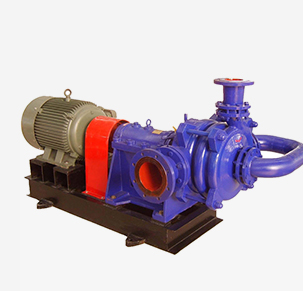English
- Afrikaans
- Albanian
- Amharic
- Arabic
- Armenian
- Azerbaijani
- Basque
- Belarusian
- Bengali
- Bosnian
- Bulgarian
- Catalan
- Cebuano
- Corsican
- Croatian
- Czech
- Danish
- Dutch
- English
- Esperanto
- Estonian
- Finnish
- French
- Frisian
- Galician
- Georgian
- German
- Greek
- Gujarati
- Haitian Creole
- hausa
- hawaiian
- Hebrew
- Hindi
- Miao
- Hungarian
- Icelandic
- igbo
- Indonesian
- irish
- Italian
- Japanese
- Javanese
- Kannada
- kazakh
- Khmer
- Rwandese
- Korean
- Kurdish
- Kyrgyz
- Lao
- Latin
- Latvian
- Lithuanian
- Luxembourgish
- Macedonian
- Malgashi
- Malay
- Malayalam
- Maltese
- Maori
- Marathi
- Mongolian
- Myanmar
- Nepali
- Norwegian
- Norwegian
- Occitan
- Pashto
- Persian
- Polish
- Portuguese
- Punjabi
- Romanian
- Russian
- Samoan
- Scottish Gaelic
- Serbian
- Sesotho
- Shona
- Sindhi
- Sinhala
- Slovak
- Slovenian
- Somali
- Spanish
- Sundanese
- Swahili
- Swedish
- Tagalog
- Tajik
- Tamil
- Tatar
- Telugu
- Thai
- Turkish
- Turkmen
- Ukrainian
- Urdu
- Uighur
- Uzbek
- Vietnamese
- Welsh
- Bantu
- Yiddish
- Yoruba
- Zulu
Telephone: +86 13120555503
Email: frank@cypump.com
Oct . 14, 2024 19:03 Back to list
Efficient Pump Solutions for Optimal Septic System Performance and Longevity
Understanding Pumps for Septic Systems
Septic systems are essential for managing wastewater in areas without access to centralized sewer systems. These systems rely on various components to function efficiently, and one of the most critical parts is the pump. Understanding the types of pumps available and their roles in septic systems can help homeowners maintain their systems effectively.
What is a Septic System?
A septic system is an underground wastewater treatment structure that utilizes natural processes to treat household wastewater. This system typically comprises a septic tank, a drain field, and in some cases, pumps. The septic tank collects wastewater from a home, allowing solids to settle at the bottom and scum to float to the top. The liquid effluent then flows out into the drain field, where it is further treated by soil and microorganisms.
The Role of Pumps in Septic Systems
In many septic systems, particularly those installed in areas with poor drainage or where the terrain is uneven, a pump is necessary to move wastewater from the septic tank to the drain field. This is particularly important for systems that are designed on lower elevations than their drain fields.
There are primarily two types of pumps used in septic systems effluent pumps and grinder pumps.
pumps for septic systems

1. Effluent Pumps These are used to pump the liquid effluent from the septic tank to the drain field. Effluent pumps are typically submersible, meaning they are installed underwater in the septic tank. They are designed to handle a moderate level of solids and operate on a float switch that activates when the water level rises to a certain point. Effluent pumps are critical in ensuring the proper flow of treated wastewater to the drain field, helping to prevent system backups and potential groundwater contamination.
2. Grinder Pumps Unlike effluent pumps, grinder pumps are designed to handle a much higher concentration of solids. These pumps grind the wastewater into a slurry before pumping it to the drain field or municipal sewage system. Grinder pumps are particularly useful in systems where the distance to the drain field is extensive or where the elevation differential requires pressurized systems. These pumps help ensure that the wastewater can be moved efficiently, preventing blockages and system failures.
Maintenance of Septic Pumps
Regular maintenance of septic pumps is crucial for the longevity and efficiency of the entire septic system. Homeowners should routinely check the pump for any signs of wear or malfunction, such as unusual noises, failure to start, or frequent cycling. It is advisable to have a professional inspect and service the pump at least once a year. Additionally, care should be taken to avoid flushing non-biodegradable items down the toilet, as these can clog the pump and lead to costly repairs.
Conclusion
Pumps play a vital role in the functioning of septic systems, especially in challenging terrains. Whether you have an effluent pump or a grinder pump, understanding how these components work and their maintenance requirements can help ensure your septic system operates smoothly over the long term. By being proactive about pump care, homeowners can prevent costly repairs and protect their investment in their property. Ultimately, a well-maintained septic system promotes a cleaner environment and adds value to your home.
-
ISG Series Vertical Pipeline Pump - Chi Yuan Pumps Co., LTD.
NewsJul.30,2025
-
ISG Series Vertical Pipeline Pump - Chi Yuan Pumps Co., LTD.|energy-efficient fluid handling&industrial durability
NewsJul.30,2025
-
ISG Series Vertical Pipeline Pump - Chi Yuan Pumps | Advanced Engineering&Industrial Efficiency
NewsJul.30,2025
-
ISG Series Pipeline Pump - Chi Yuan Pumps | High Efficiency, Energy Saving
NewsJul.30,2025
-
ISG Series Vertical Pipeline Pump-Chi Yuan Pumps|High Efficiency&Reliable Performance
NewsJul.29,2025
-
ISG Series Vertical Pipeline Pump|High Efficiency&Low Noise
NewsJul.29,2025










